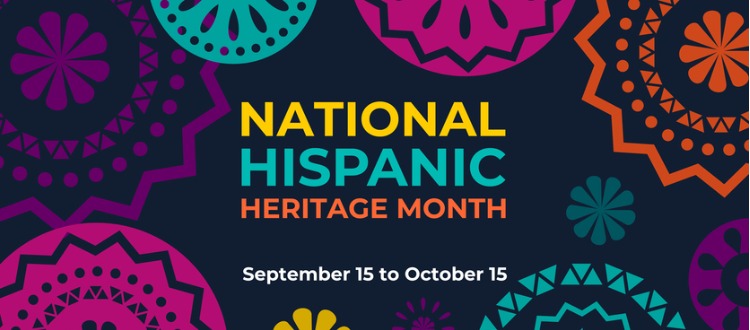Celebrating National Hispanic Heritage Month

Date Posted: 9/16/2022
National Hispanic Heritage Month (Sept. 15–Oct. 15) honors the cultures, contributions, and history of Hispanic and Latino Americans and serves as a time to celebrate the heritage rooted in Latin American countries.
According to the Library of Congress, this national observation “started in 1968 as Hispanic Heritage Week under President Lyndon Johnson and was expanded by President Ronald Reagan in 1988 to cover a 30-day period starting on Sept. 15 and ending on Oct. 15.” It was then enacted into law Aug. 17, 1988.
Why Sept. 15? That date marks the anniversary of independence for Latin American countries Costa Rica, El Salvador, Guatemala, Honduras, and Nicaragua. In addition, Mexico and Chile celebrate their independence days on Sept. 16 and Sept. 18, respectively, and Belize celebrates its independence Sept. 21.
We’ll start with a few influential figures you may not have heard of:
- Ellen Ochoa—Dr. Ochoa was the first Hispanic woman to travel into space when she served on a nine-day mission aboard the Space Shuttle Discovery in 1993. She went on to complete three more space missions, and 20 years after her first flight, she became the first Hispanic director of the Johnson Space Center. She has received numerous awards from NASA, and six schools have been named after her—including the Ellen Ochoa STEM Academy in Grand Prairie.
- Sylvia Mendez—Seven years before the landmark Brown v. Board of Education ruling in 1954, Mendez was at the center of Mendez v. Westminster in California. Her parents, along with several other Hispanic families in the community, challenged the segregation present in Orange County’s schools. In 1947, Mendez v. Westminster became the first successful federal school desegregation decision in the U.S. Following a 30-year career in nursing, Mendez became active in educating others about how her case paved the way for school desegregation. In 2011, she received the Presidential Medal of Freedom for her civil rights work.
- Pedro Sanchez—Dr. Sanchez pioneered scientific approaches to treat soils that were previously believed to be unsuitable for agriculture—particularly tropical soils. His innovations have been adopted in over 20 countries and have been instrumental in bolstering food production to keep up with population growth. One such example is his work in Brazil, where he helped develop the Cerrado, a tropical area the size of Western Europe, into arable land.
Here are some more resources Texas educators can use with their students to commemorate National Hispanic Heritage Month and the Latin American culture every day of the year:
- The U.S. Department of Education has compiled a list of resources located through various federal government agencies at sites.ed.gov/hispanic-initiative/national-hispanic-heritage-month.
- Want some fun facts about the nation’s Latino population to share with students? Check out this data from the Pew Research Center.
- Hispanics were among the original Texans. As such, the Texas Historical Commission has compiled some travel resources, a list of historic sites, videos, and more for Texans to use to deepen their knowledge and appreciation of Hispanic and Latino culture.
- The Texas A&M University Libraries have compiled free educational resources including books, video clips, and websites you can use in the classroom.
- Visit hispanicheritagemonth.gov, where the Library of Congress, National Archives and Records Administration, National Endowment for the Humanities, National Gallery of Art, National Park Service, Smithsonian Institution, and United States Holocaust Memorial Museum have teamed up to pay tribute to the generations of Hispanic Americans who have positively influenced and enriched our nation and society. There are links to presentations, exhibits, events, and teacher-specific content.
- Statistics in Schools has an activity where students can compare the frequencies of Hispanic or Latino population percentages for the 50 states and District of Columbia by completing frequency tables and creating histograms that summarize and display the data. Click here for more details.
And that’s just to get you started! Enjoy National Hispanic Heritage Month!

